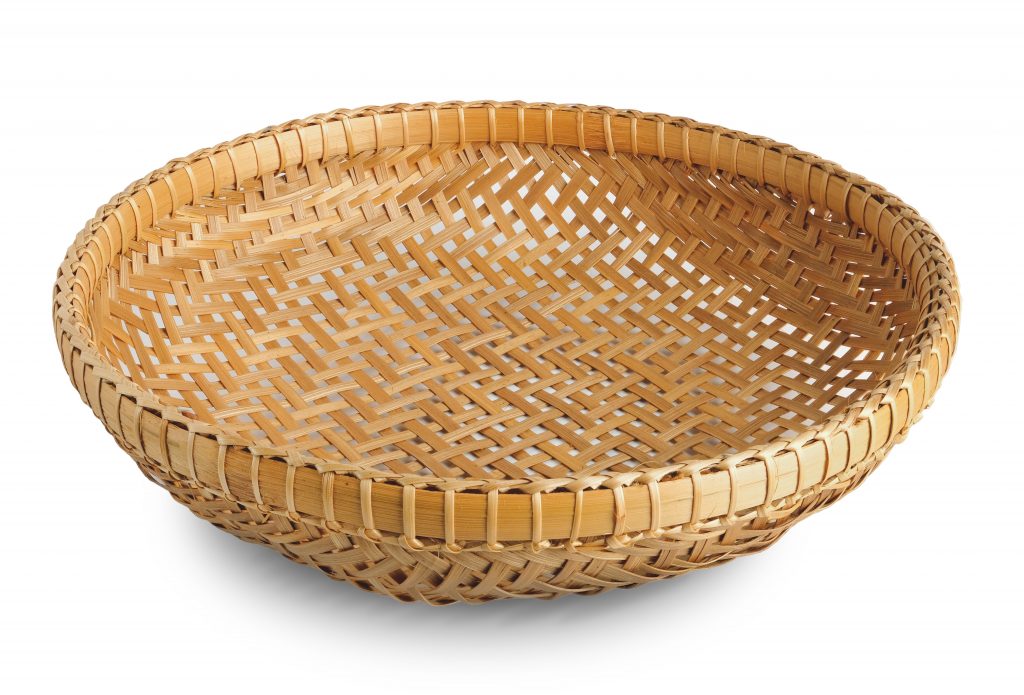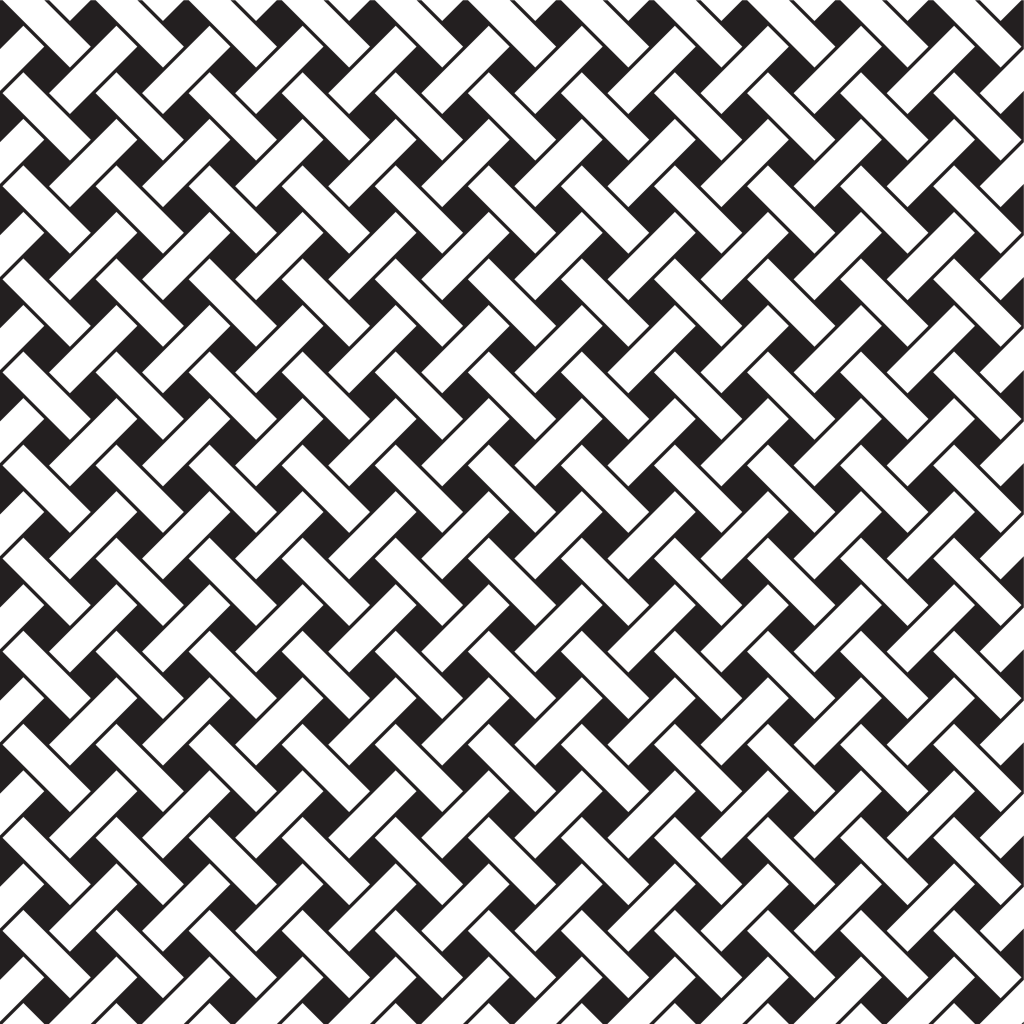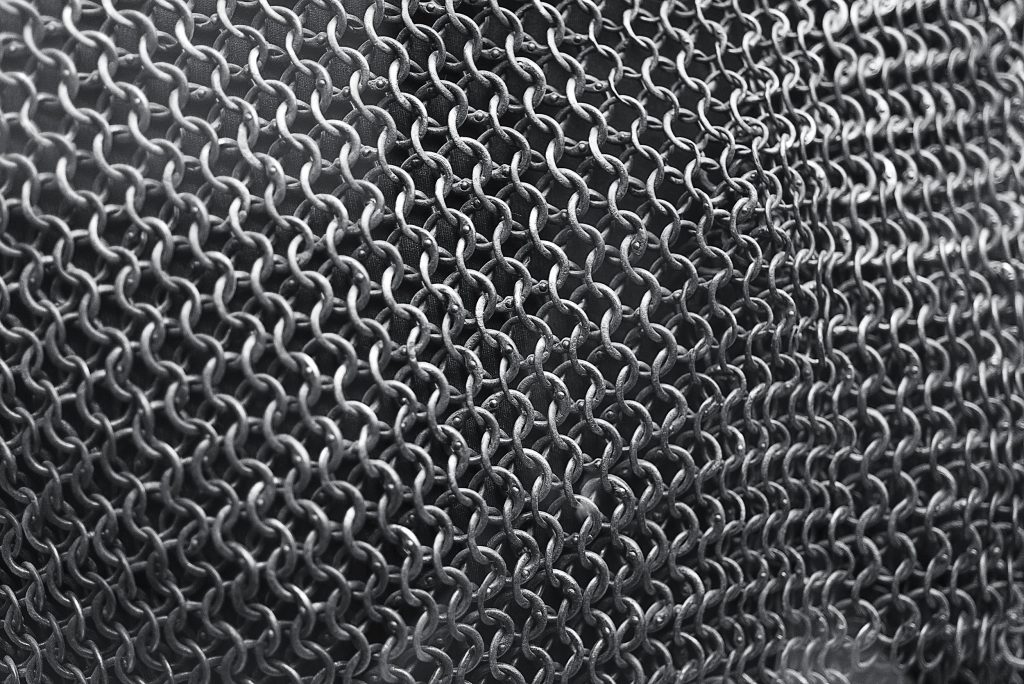. . . Thou shalt take of the first of all the fruit of the ground, which thou shalt bring in from thy land that the Lord thy G‑d giveth thee; and thou shalt put it in a basket and shalt go unto the place which the Lord thy G‑d shall choose to cause His name to dwell there. . . . And the priest shall take the basket out of thy hand, and set it down before the altar of the Lord thy G‑d.
Deuteronomy 26:2,4
And He garbed Himself with righteousness as a coat of mail, and a helmet of salvation upon His head . . .
Isaiah 59:17
The Torah portion Tavo begins with the commandment of the offering of the First Fruits (bikkurim). The simple meaning of this mitzvah is self-evident. We are commanded to express our gratitude to G‑d for bringing us to the promised land by bringing the First Fruits as a gift to the priests serving in the Holy Temple. However, the simplicity of this commandment betrays rich metaphors hidden therein. We have already discussed the metaphor of wave-particle duality symbolized by the fruits in the basket (see First Fruits and the Wave-Particle Duality of Nature).
Basket-Weave and the Lattice Field Theory
Now, let us focus on the symbolism of the wicker basket.

Figure 1. Fruit Basket. Shutterstock_1803756757
What do the tiny holes in the wicker basket mean? Every year, when I read this Torah portion, the wicker basket invariably invokes in my mind lattice geometry and its use in quantum field theory.

Indeed, the weave of a wicker basket is called “lattice.” However, it is not only the crossed wooden strips that make this weave into a lattice. Any regular arrangement of points or in space, such as atoms in a crystal, are called “lattice” in geometry.

In the case of a basket, the regular arrangement of the holes between the interwoven strips represents a lattice pattern. As we shall see later, the holes play a very important role in this story.
It has been long understood in quantum theory that on the most fundamental level, space and time must be discrete, that is quantized. Indeed, a distance in space less than Planck length[1] is meaningless. So too, an interval of time less than Plank time[2] is meaningless. The question is how to quantize time, that is, how to make it discrete.[3] In quantum field theory, lattice geometry is one model to represent the quantization of space. This geometry is used in quantum field theory.[4]
If we explore the metaphor of the First Fruits offering further, things get even more interesting.
The First Fruits in Kabbalah
Rabbi Chaim Vital, in the name of the Arizal (Rabbi Isaac Luria Ashkenazi), comments on these verses:
The commandment of the First Fruits is the return of the lights of the Nukva to Chesed, which is embodied by the priest, in order that evil not be able to derive sustenance. This is the mystical meaning of “the priest will take the basket from your hand,” for the gematria (numerical value) of the word “the basket” (ha-tene) is the same as that of the name Adni.[5]
Ta’amei HaMitzvot and Sha’ar HaPesukim, parashat Tavo
Indeed, the numerical value of ha-tene is 65[6]—the same as that of Adni (or Ado-nai[7]).[8] Ado‑nai is a divine name representing the female principle, which the language of Kabbalah refers to as Nukva.[9] Nukva receives the abstract idea of the divine purpose[10] from her male counterpart, Zeir Anpin (Z”A), which embodies the six midot[11] from Chesed to Yesod. Here, as a shorthand, the Arizal identifies Z”A with the first and primary midah—Chesed. Z”A represents the abstract idea of the purpose of creation and the divine intention, as they exists in the mind of G‑d, whereas Nukva represents the drive to the actualization of this idea in the lower worlds.
However, there is always the danger that Nukva gets too involved with the lower worlds and loses her sense of purpose, the connection to the abstract idea. This, in kabbalistic terminology, leads to spillage of the light, which gives vitality to the forces of evil—those ideas that are opposed to the abstract idea of the divine. Thus, the Arizal explains, to prevent such spillage, Nukva must reconnect with her male counterpart—reconnect with the abstract idea and the initial intention. This is accomplished by Nukva reflecting back the excess light to Chesed. Thus far is Kabbalah’s insight into the mystical dimension of the commandment of bikkurim (the “First Fruits”). The most crucial point for us, in this commentary, is that the wicker basket symbolizes the sefirah of Malchut (Nukva).[12]
The First Fruits in Chasidic Philosophy of Chabad
Rabbi Moshe Wisnefsky connects this commentary of the Arizal with the Chasidic teaching of Rabbi Schneur Zalman of Liadi (the Alter Rebbe) in the Tanya.[13] The offering of the first fruits (bikkurim) is a form of tzedakah (charity), where farmers bring their first fruits to Jerusalem and give them to priests who would eat them. In Epistle 3 of Igeret HaKodesh, the Alter Rebbe explores the mystical dimension of charity—tzedakah.
The Alter Rebbe writes:
Therefore, by the act of charity and the performance of kindness [the fruits of which man enjoys in this world], there appear, metaphorically speaking, gaps in the supernal garment that encompasses the Body— [the kelim (vessels) of the ten sefirot ]—through which to irradiate and to diffuse light and abundance . . . .[14]
Tanya, Igeret HaKodesh, 3
There are several significant parallels in this narrative with the offering of the First Fruits as discussed by the Arizal. First, the act of charity parallels the offerings of the first fruits, as discussed above. The ten sefirot parallel the fruits in the basket. The kelim (vessels) of the ten sefirot parallel the basket that holds the fruits. Furthermore, the holes (or gaps) in the vessels of the sefirot parallel the holes in the wicker basket.[15]
Let us now recall that the Arizal explains that the basket is emblematic of the Nukva (the sefirah of Malchut). (Recall that “the basket,” that is hatene has the same numerical value, 65, as Ad-nai—a divine name associated with the sefirah of Malchut or Nukva.) Kabbalah teaches that space originates in Malchut. From this perspective, the wicker basket is a metaphor for space.[16]
Furthermore, the Alter Rebbe writes:
“And He garbed himself with tzedakah as a coat of mail, and a helmet of salvation upon His head.”[17] (On this verse) our sages, of blessed memory, commented: “Just as with chain mail each scale adds up to form a large mail, so it is with charity; each coin adds up to a large amount.”[18]
Tanya, Igeret HaKodesh, 3
Using the structural parallel between the wicker basket and space, let us apply the metaphor of chain-mail armor to physical space. A chain of mail is made of small interlocking rings. If our parallel is true, physical space would have to be made of tiny interconnected circles of sorts. And, in fact, this is exactly what loop quantum gravity says about the nature of space!

Loop Quantum Graivty
Loop quantum gravity was born out of the need to reconcile the two best theories of physics—general relativity and quantum theory. General relativity is very successful in describing cosmology and the universe on a large scale, but it fails when enormous mass becomes compressed in a tiny volume, as in a black hole or at the time of the Big Bang. Quantum theory, on the other hand, is extremely successful in describing subatomic particles but is incompatible with general relativity. The unification of these two great theories, called quantum gravity, has eluded physicists for almost a century –and not for the lack of effort.
The first significant step toward constructing the theory of quantum gravity was the formulation of the Wheeler–DeWitt equation, first derived in 1967, which is very similar to the static Schrödinger equation, except that the universal wave function accounts for a variety of possible geometries that the universe may have. The problem was that nobody knew how to solve this equation. The next breakthrough occurred in 1986, when Abhay Ashtekar reformulated general relativity in the language of what is called now Ashtekar variables. Ted Jacobson and Lee Smolin discovered that, when written in these Ashtekar variables, the Wheeler–DeWitt equation has solutions labeled by loops. Carlo Rovelli and Lee Smolin formulated quantum gravity theory in terms of these loop solutions.

In this theory, called loop quantum gravity (LOG), space is not continuous but rather is quantized, that is, discrete. Specifically, space appears to be woven from tiny interconnected loops. These loops are really small—on the order of magnitude of a Planck length—and are interlocked. When many of them are connected together, space appears to be like chain mail.
Let us now recall the Talmudic commentary on the verse from Isaiah (59:17), as cited by Rabbi Schneur Zalman: “Just as with chain mail each scale adds up to form a large mail, so it is with charity; each coin adds up to a large amount.”[19] Combining this Talmudic commentary with the kabbalistic commentaries of the Arizal and Rabbi Schneur Zalman, we have established earlier that this metaphor can also apply to space. That is, in its spiritual source in the sefirah of Malchut, space appears as chain mail, just as in loop quantum gravity—a leading candidate to stand in for the hypothetical theory of quantum gravity. Here is how one of the creators of loop quantum gravity, Carlo Rovelli, describes space in his book:
The theory describes these “atoms of space” in mathematical form and provides equations that determine their evolution. They are called “loops,” or rings, because they are linked to one another, forming a network of relations that weaves the texture of space, like the rings of a finely woven, immense chain mail.[20]
There we have it—a Chasidic Rebbe, Rabbi Schneur Zalman of Liadi,[21] and a leading contemporary theoretical physicist, both describing the structure of space in the same way—comparing it to chain mail.
Conclusion
Let us review the many steps that led us to this remarkable structural parallel between the mystical symbolism of the biblical commandment of bikurim (the First Fruits) and loop quantum gravity.
- First, we note the symbolism of the basket weave (of the wicker basket in which the First Fruits are brought to the Temple) as a metaphor for lattice geometry used in quantum field theory.
- We find in the writings of the Arizal (as recorded by his principal disciple, Rabbi Chayim Vital) the numerical value of hatenet (the basket) is the same as that of the divine name Ado-nai, which is associated with the sefirah of Malchut.
- The Alter Rebbe (Rabbi Schneur Zalman of Liadi), in Igeret HaKodesh, connects the holes in the basket with the kabbalistic concept of the holes in curtain that screens the divine light—tzimtzum—diminishing its intensity. He uses a Talmudic teaching, based on the verse in Isaiah, to compare this pierced with the chain of mail.
- Connecting this teaching of the Alter Rebbe with the teachings of the Arizal who identified the basket with the sefirah of Malchut, we note that, in Kabbalah and Chasidic philosophy, space originates in the sefirah of Malchut.
- Connecting the dots allows us to conclude that the chain mail metaphor is applicable to the topology (structure) of space.
- Finally, we observe that it is precisely the topology used in loop quantum gravity. In fact, the chain mail metaphor for the structure of space is widely used in loop quantum gravity—a leading contender for the hypothetical theory of quantum gravity.
This structural parallel between the kabbalistic/Chasidic view of space and the conception of space in quantum loop gravity is remarkable, to say the least.
Endnotes:
[1] Planck length is the smallest conceivable unit of length, ℓP is ~ 1.616 ´ 10-35 m.
[2] Planck time is the smallest conceivable unit of time, tP is ~ 5.39 ´ 10-44 s.
[3] The notion of discreteness of space and time is very near and dear to me. When I first studied quantum theory as a teenager, I immediately realized that space and time cannot be continuous in quantum field theory as they are in quantum mechanics or relativity. Space and time must be discrete. I started thinking how to represent quantized space-time mathematically and immediately ran into a problem: quantum theory, as well as all of theoretical physics, employs calculus, which presupposes continuity and smoothness of space and time. However, if there cannot be an interval of time shorter than Planck time, tP = 5.39×10−44 s, then how do you define a derivative over time? Similarly, when we consider fields, we calculate partial derivatives of field potential, where the partial derivatives are similarly defined as limits. If the smallest unit of length is Planck length, how do you define partial derivatives over space coordinates? However, if we postulate that the space is quantized, the length can never be less than that Planck length, ℓP. I was stuck. Existing mathematics seemed not to allow the application of calculus in quantized space-time. By the time I turned thirteen, I developed what I thought was new mathematics, where calculus was built on small but finite elements replacing limits. I shared my discovery with my math teacher, and she thought I really managed to build a new mathematical theory. She advised me to travel to Moscow and present my theory at Moscow University. I did just that. I showed up at the theoretical physics seminar of Prof. Dmitri D. Ivanenko of the physics department of Moscow University, where I described my theory. I was politely told that this theory was already well known and was called the theory of finite differences. I was offered a cup of tea as a consolation. As I should have expected, I had reinvented the wheel. But my naïve intuition that space and time must be quantized was correct. As I later learned, this intuition was shared by many physicists, including Lee Smolin and Carlo Rovelli, who finally implemented this idea in their concept of loop quantum gravity.
[4] One example of the use of lattice geometry in quantum field theory is the lattice gauge theory—a group of gauge theories, such as quantum electrodynamics, chromodynamics, and the standard model, defined on quantized space-time.
[5] Ta’amei HaMitzvot and Sha’ar HaPesukim, parashat Tavo. (English translation by Rabbi Moshe Wisnefsky, Apples from the Orchard: Mystical Insights on the Weekly Torah Portion [Malibu, CA: Thirty Seven Books, 2008], p. 989.
[6] Hatene: heh-tet-nun-alef = 5 + 9 + 50 + 1 = 65.
[7] It is a prevalent Jewish custom to change the spelling of a divine name to avoid its possible desecration, if the paper on which it is printed gets discarded. The translator of the writings of Rabbi Chaim Vital chose to chose to change the spelling to Adni, whereas the convention adopted in this blog is to insert a hyphen.
[8] Ado-nai: alef-dalet-nun-yud = 1 + 4 + 50 + 10 = 65.
[9] Nukva is an Aramaic (the language of the Talmud and Zohar) equivalent of the Hebrew nekevah, meaning “female.” The root of this word is nekev (“hole”). Thus, the literal translation of the words nukva and nekevah is “full of holes.” The reason for this strange etymology is explained in the Talmud, which points out that female body has one more opening than a male body. It is not coincidental then that the wicker basket is connected through the gematria to the female principle. First, the basket represents a keli (“vessel”). So too in Kabbalah, the female is always a vessel; physically, a woman’s body is a vessel for the male seed. Conceptually, female refers to the receiving principle (vessel), whereas male is always the giving principle. Second, just as a female body is “full of holes,” so too is the wicker basket full of holes.
[10] This abstract idea of the divine purpose inspires Nukva to implement and actualize the divine purpose in the lower realm. Alternatively, the books of Kabbalah speak of Nukva receiving the divine light from Z”A (for which “seed” is sometimes used as a physical metaphor, meaning that Z”A “impregnates” Nukva with the seminal idea of the divine purpose.)
[11] The six lower sefirot are Chesed, Gevurah, Tiferet, Netzach, Hod, and Yesod.
[12] The sefirah of Malchut is a vessel that receives from the male Z”A.
[13] Rabbi Moshe Wisnefsky, Apples from the Orchard: Mystical Insights on the Weekly Torah Portion (Malibu, CA: Thirty Seven Books, 2008), p. 990.
[14] Rabbi Schneur Zalman of Liadi, Tanya, Igeret HaKodesh, Epistle 3. (See online at https://www.chabad.org/library/tanya/tanya_cdo/aid/1029262/jewish/Epistle-3.htm.)
[15] On a mystical level, the holes in the kelim (“vessels”) of the ten sefirot echo the holes in the Nukva, which is symbolized by the wicker basket in the commentary of the Arizal (see footnote 4 above).
[16] As the basket is a vessel that hold the fruit, space is seen in Kabbalah as a vessel that holds the stars and the planets. (CITE)
[17] Isaiah 59:17.
[18] Babylonian Talmud, tr. Bava Batra 9b.
[19] Babylonian Talmud, tr. Bava Batra 9b.
[20] Carlo Rovelli, Seven Brief Lessons on Physics (Riverhead Books, 2014), pp. 42–44.
[21] This metaphor appears in Igeret HaKodesh published posthumously as a part of the Tanya in 1814. Igeret HaKodesh is a collection of letters in which Rabbi Schneur Zalman explains to his disciples the mystical meaning of the Torah commandments. These letters were written presumably sometime between 1788 and 1812. Let us recall, however, that originally the metaphor of chain mail was used by the prophet Isaiah and later discussed in the Talmud, albeit in a different context.


LOVE your writing and insights! You should give thought to a weekly podcast, QM and the weekly parsha.
L’Shana Tova!